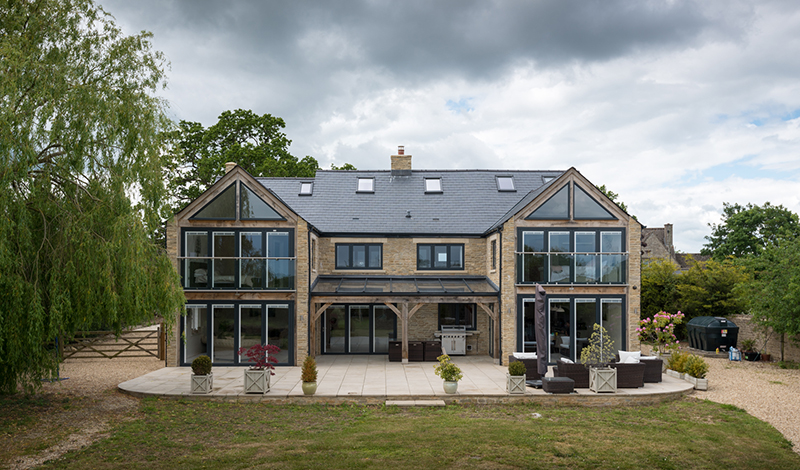
The introduction of new Building Scotland Regulations on 1st February 2023 has placed energy efficiency high on the agenda for construction professionals. The regulations, which aim to reduce emissions across Scotland’s building stock by more than two thirds by 2030, have put pressure on the industry to raise standards and find new ways to improve the thermal performance of homes and non-domestic buildings. Here, Ben Brocklesby, director at Origin, explains how innovative glazing can help achieve smarter, better performing buildings with less energy consumption, while creating healthier and more comfortable living and working environments.
Investing in performance
Skyrocketing gas and electricity prices have made energy performance a priority for home and business owners, who are now willing to pay more for buildings with improved thermal performance. According to BEIS, properties with an EPC ‘C’ rating are worth around five percent more than those with a ‘D’ rating. Building energy efficient homes is therefore not only important to meet the new building regulations, but it can also add significant value to a project.
Revolutionary design
Every building must now be designed and constructed in a way that reduces heat loss by preventing the transmission of energy through the building envelope. The latest Building Scotland Regulations dictate that windows and doors installed into new homes and for alterations to existing homes, must achieve a U-Value of 1.4 W/m2K. As an alternative, systems installed into existing properties can have a Window Energy Rating or Door Set Energy Rating of ‘B’ or above.
Some manufacturers now offer triple glazing as standard to achieve the new targets. While this provides a short-term solution, the additional pane of glass adds significant cost and weight, meaning doors and windows are harder to transport, install, and operate.
As one of the UK’s most successful manufacturers, Origin upgraded its systems to meet and exceed the new thermal performance targets, without compromising design, functionality, and style.
Origin was the first in the industry to offer Aerogel technology and optional upgrade. Originally used in spacesuits and spaceships, Aerogel is the world’s best insulator. When used within the thermal break of the Origin Premium Window (OW-80), it can achieve an ultra-low U-Value of 0.8 W/m2K.
A significant amount of heat loss can also occur through window and door frames, especially in aluminium, as this material is a strong conductor of heat. Polyamide thermal break barriers between the interior and exterior profile prevent this happening, helping achieve lower U-Values.
Systems that have been tested in international markets can offer a higher level of thermal performance. For example, the Origin Bi-fold Door has been rigorously tested overseas to withstand even the most extreme weather conditions. It excels in water tightness, air permeability, wind resistance, and even hurricane testing. It can be specified with 24, 28 or 32mm glazing unit sizes to accommodate different types of glass, such as thermal glass, to dramatically improve energy efficiency without adding as much weight, or cost, as triple glazing.
Finally, accurate installation will prevent draughts and heat loss. Reputable manufacturers will work a network of partners and installers and offer them installation training to ensure their system is fitted with total precision.
The Importance of natural light
Natural light is so important in homes and commercial buildings, especially office environments where people spend long periods of time. It is scientifically proven to improve mood and cognitive performance. Improving the energy efficiency of glazing systems ensures architectural designs can still accommodate large expanses of glass and allow maximum amounts of natural daylight to come into a property.
By specifying doors and windows that achieve the lowest possible U-Values through innovative design, construction professionals can exceed the new building targets without compromising on design, functionality, and style.











